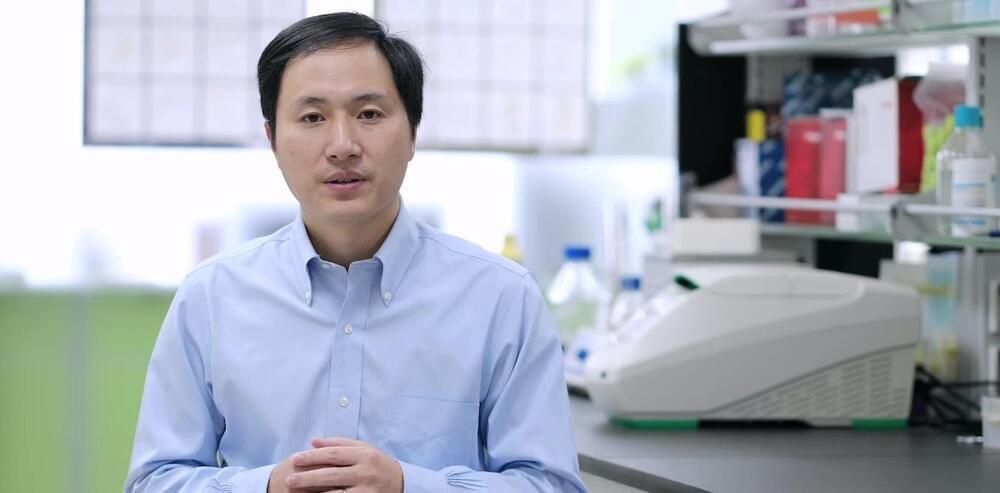In this video I discuss Neuromorphic Computing and the Future of AI
#AI
Support me on Patreon: https://www.patreon.com/AnastasiInTech
In this video I discuss Neuromorphic Computing and the Future of AI
#AI
Support me on Patreon: https://www.patreon.com/AnastasiInTech

In the four years since an experiment by disgraced scientist He Jiankui resulted in the birth of the first babies with edited genes, numerous articles, books and international commissions have reflected on whether and how heritable genome editing—that is, modifying genes that will be passed on to the next generation—should proceed. They’ve reinforced an international consensus that it’s premature to proceed with heritable genome editing. Yet, concern remains that some individuals might buck that consensus and recklessly forge ahead—just as He Jiankui did.

An important breakthrough in understanding how inflammation is regulated has been made by scientists from Trinity College Dublin. They have just discovered that a key immune alarm protein previously believed to calm down the immune response actually does the opposite.
Their work has numerous potential impacts, especially in the context of understanding and responding to autoimmune disorders and inflammation.
Our immune system serves a very important function in protecting us from infection and injury. However, when immune responses become too aggressive this can lead to damaging inflammation, which occurs in conditions such as rheumatoid arthritis and psoriasis. Inflammation is triggered when our bodies produce “alarm proteins” (interleukins), which ramp up our defenses against infection and injury by switching on different components of our immune system.


Theoretical physicists from Warsaw and Oxford universities argue that a superluminal world possessing three temporal dimensions and one dimension in space could potentially change our concept of time, according to a new paper.
The researchers involved say they have developed “an extension of special relativity” that incorporates three individual time dimensions with a single space dimension, which helps explain how observations made by “superluminal” observers—inertial observers moving faster than the speed of light—might appear.
Within such a framework, the researchers argue that spontaneous events that can occur in the absence of a deterministic cause and other strange phenomena would be experienced by observers moving faster than the speed of light within a vacuum, concepts that potentially transform our concept of time as we know it.

As computer scientists tackle a greater range of problems, their work has grown increasingly interdisciplinary. This year, many of the most significant computer science results also involved other scientists and mathematicians. Perhaps the most practical involved the cryptographic questions underlying the security of the internet, which tend to be complicated mathematical problems. One such problem — the product of two elliptic curves and their relation to an abelian surface — ended up bringing down a promising new cryptography scheme that was thought to be strong enough to withstand an attack from a quantum computer. And a different set of mathematical relationships, in the form of one-way functions, will tell cryptographers if truly secure codes are even possible.
Computer science, and quantum computing in particular, also heavily overlaps with physics. In one of the biggest developments in theoretical computer science this year, researchers posted a proof of the NLTS conjecture, which (among other things) states that a ghostly connection between particles known as quantum entanglement is not as delicate as physicists once imagined. This has implications not just for our understanding of the physical world, but also for the myriad cryptographic possibilities that entanglement makes possible.




A previously unidentified Maya civilization made up of 964 interconnected settlements has been discovered in northern Guatemala. Dated to the Preclassic Maya period – which lasted from around 1,000 BCE until 150 CE – the scattered sites cover an area of approximately 1,685 square kilometers (650 square miles) and are linked by 177 kilometers (110 miles) of ancient roads.
Researchers spotted the network of settlements using LiDAR, a detection system that bounces laser signals off surfaces in order to reveal hidden features and structures. While flying over Guatemala’s Mirador-Calakmul Karst Basin (MCKB), the team utilized the technology in order to penetrate the thick jungle canopy and expose the ancient constructions lurking beneath.
“The LiDAR survey revealed an extraordinary density and distribution of Maya sites concentrated in the MCKB, many of them linked directly or indirectly by a vast causeway network,” write the researchers in a new study. In total, they found 775 sites within the MCKB itself, with a further 189 located in the surrounding karstic ridge.